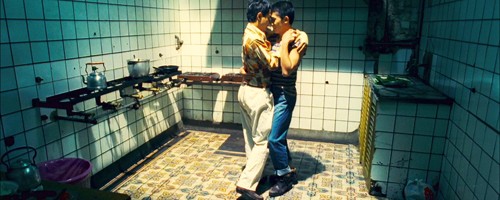Portland State moving toward green future
On the ground floor of the University Center Building’s parking garage, a small room sits nestled among the dormant SUVs of PSU commuters. Inside amongst tools and parts stands bike mechanic Ian Stude, the manager of Portland State’s tiny bike cooperative.
Kim Dinan peers out of her office between Portland State’s professional woodshop and the facilities receiving warehouse. As Resource Management coordinator at Portland State she is charged with caring about something most people avoid: garbage.
In the lobby of Neuberger Hall, Dan Zalkow sits at his desk, separated from the clamor of financial aid lines and frustrated students sorting through stacks of paperwork. As the manager of Transportation and Parking Services, he recently garnered Portland State a BEST award for his efforts to promote alternative transportation.
All three of these Portland State employees share a commitment to sustainability, something that PSU has in common with other Portland institutions, including Lewis and Clark College and the city itself.
A recent study done by the City of Portland showed that Portland had met the goals specified by the Kyoto Protocol, the main objective of which is to lower greenhouse gas emissions to seven percent below the 1990 emission levels.
Lewis and Clark met the Protocol in 2003.
A private university in southwest Portland, Lewis and Clark was able to satisfy the requirements of the protocol fairly easily. It improved its transportation infrastructure by encouraging on-campus living and charging more for parking, upgrading its natural gas boilers, installing energy saving appliances, meeting LEED building standards and offering green power in the dorms.
Although Portland State has stated a commitment to sustainability, no specific efforts have been made to meet the Kyoto Protocol.
“We haven’t specifically discussed Kyoto,” said Dresden Skees-Gregory, sustainability coordinator at Portland State.
According to the Energy Management Plan on Portland State’s sustainability web site, the 2002-03 energy consumption here resulted in approximately 70 million pounds of carbon dioxide (CO2) being released into the atmosphere.
However, the Broadway Building, one of three “green” buildings at Portland State, officially opened last year. At 18,000 square feet, it is home to the largest eco-roof in Portland. The eco-roof, made of soil, gravel, grasses and cacti, provides insulation and allows for a lag time in water runoff to the sewer system.
A building is designated “green” when it has been LEED certified. LEED, Leadership in Energy and Environmental Design, is the standard for eco-friendly development. Portland State’s other “green” buildings are the Epler and the new Engineering Tower.
Lighting efficiency has also been greatly improved. Occupancy sensors have been added to classrooms and study alcoves and all the Park Blocks lamps near Portland State have been replaced with high-efficiency bulbs.
Portland State has a recycling rate of 27 percent according to Kim Dinan, noting that this statistic is for all refuse, “recyclable or not,” and that the rate keeps increasing.
Under Dinan’s watch, composting has also gained a spotlight. Waste from the kitchens and dining halls in the Smith Memorial Union, Ondine and University Place create an average of eight tons of compost each month. A year ago, nothing was composted.
“Wouldn’t it be cool if sustainability was PSU’s thing?” said Dinan.
PSU has also focused sustainability efforts in its transportation infrastructure. In 2003, 40 percent of the Portland State community drove to campus. Just two years later, that number fell to 29 percent.
Regular use of mass transit, formerly at 30 percent, has jumped 8 percent in the last two years. Dan Zalkow attributes these dancing numbers to the FlexPass, the discounted transit pass he introduced last year. The pass shaves about a third off the cost of public transportation and is subsidized in part by parking fees.
“It’s about half the price of a parking permit,” he said. In its second year, sales of the pass are up 50 percent.
As part of Transportation, membership to the bike co-op, which is usually $10, is free with the FlexPass.
Located on the ground floor of the University Center building, the co-op is open Monday through Friday, 10 a.m. ?” 3 p.m.
“We carry basic keep-you-on-the-road tools,” Stude said. He added that while no major overhauls can be done there, he or any other bike mechanic there would be happy to help fix any bike. The co-op also sells wholesale parts and merchandise, and is offering workshops later this year on maintenance and repair.
“There are little bits here and there that will add up to a big difference,” said Amy Dvorak, a sustainability graduate research assistant, who is currently performing an environmental assessment of the entire campus. “I think things are on their way.”




